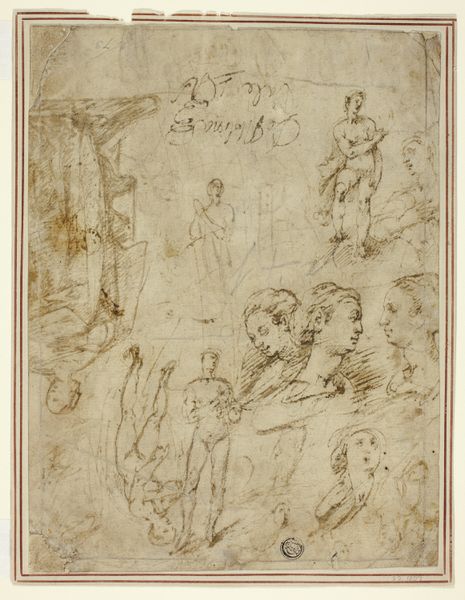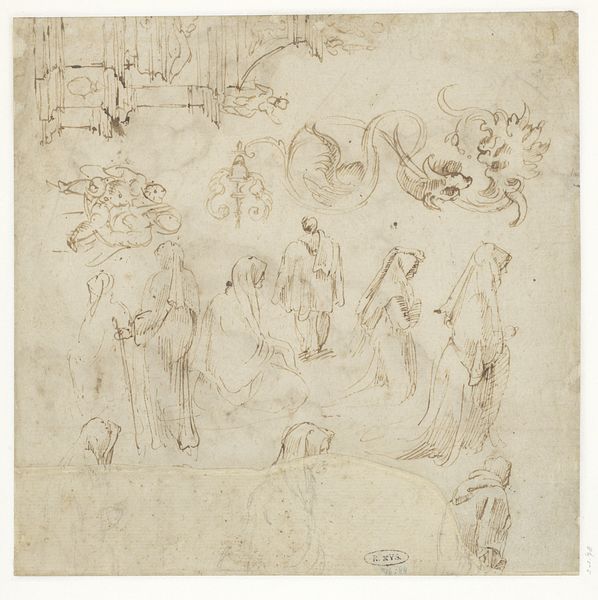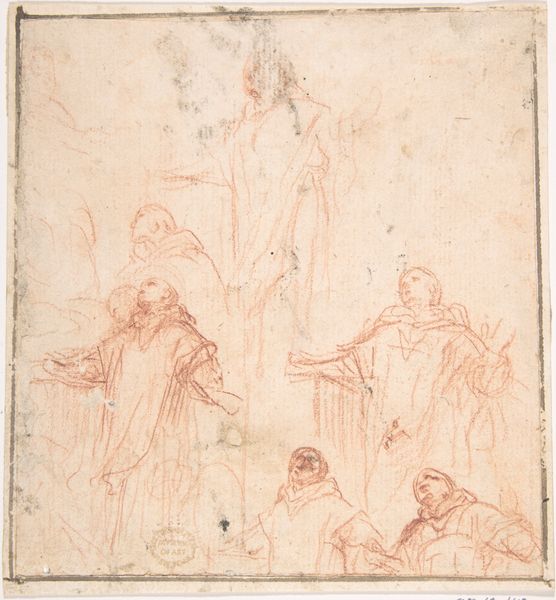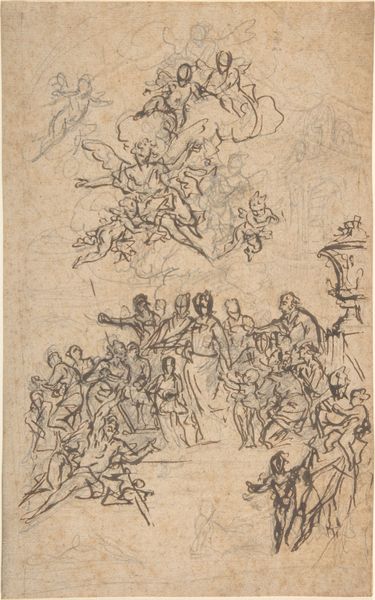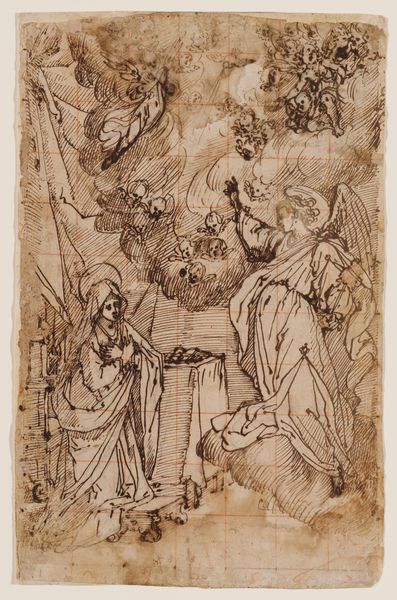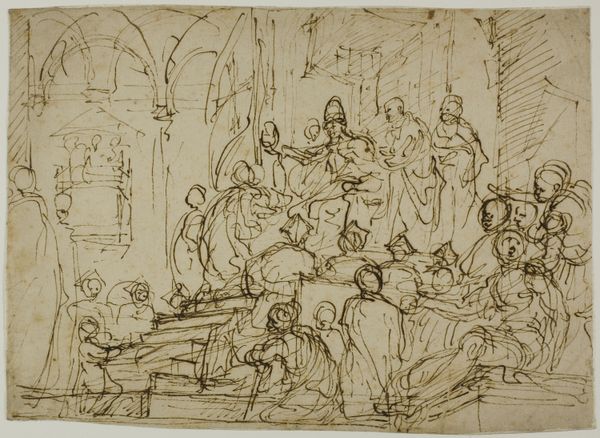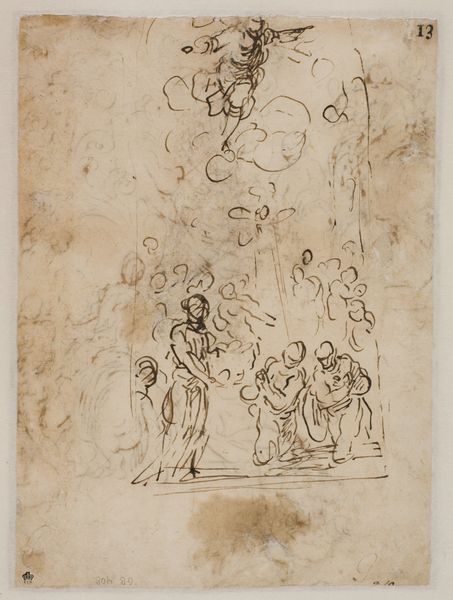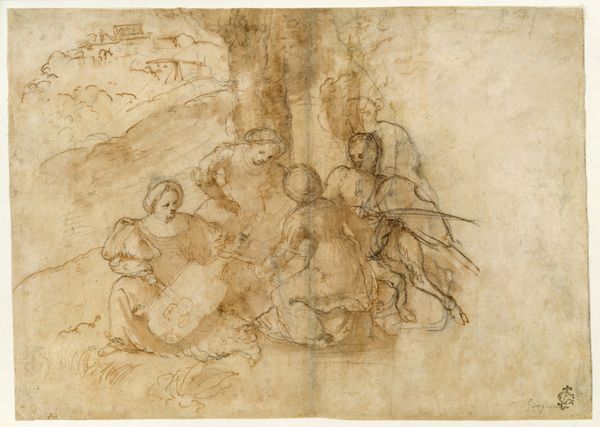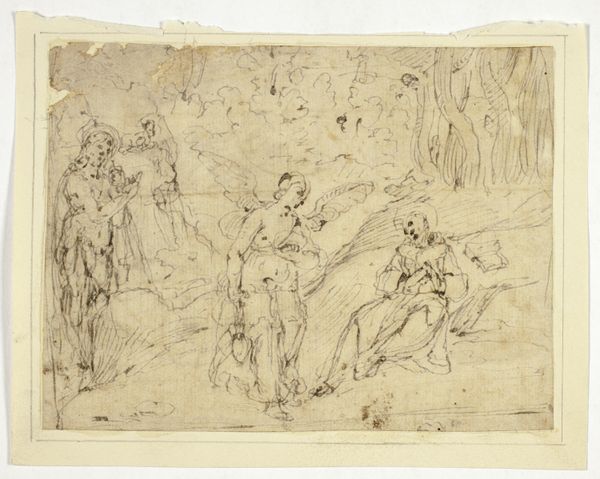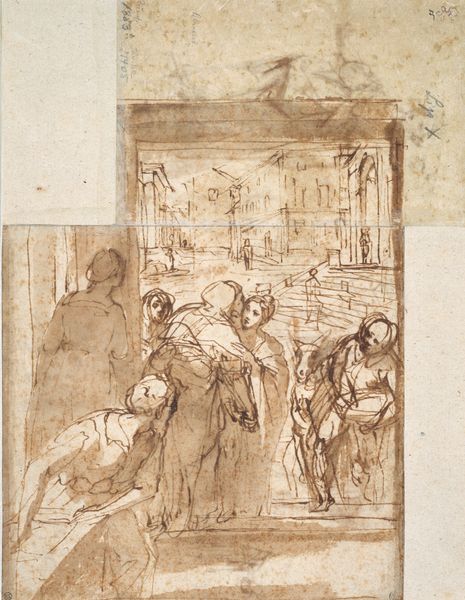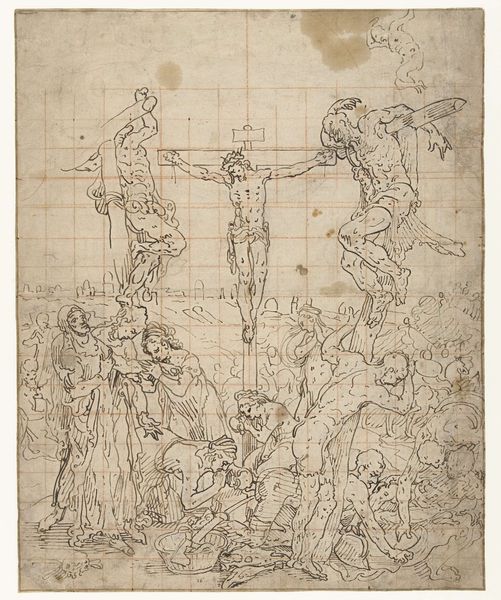
drawing, paper, ink
#
portrait
#
drawing
#
ink drawing
#
narrative-art
#
ink painting
#
etching
#
figuration
#
paper
#
ink
#
academic-art
#
italian-renaissance
Dimensions: 8 x 8 1/8 in. (20.32 x 20.64 cm) (sheet, irregular)
Copyright: Public Domain
Editor: We're looking at "Madonna and Child with Saints Laurence" by Giovanni Baglione, dating back to about 1630. It's an ink drawing on paper. The loose linework gives it a sense of dynamism, almost like a sketch of a dream. What do you see in this piece? Curator: What strikes me is how Baglione uses this drawing not just as a study for a potential painting, but as a site of inquiry. The two scenes, juxtaposed as they are, present distinct approaches to religious imagery. Notice the theatricality of the left side, Madonna elevated, almost staged, while the right presents a more dynamic, almost chaotic vision. How might contemporary audiences have perceived these contrasting styles? Editor: So, you’re suggesting Baglione is showing different possible depictions and their social reception at the time? The theatrical staging versus this more chaotic approach… Curator: Precisely! Consider the role of the Church during the Baroque period. There was a clear tension between conveying spiritual authority and engaging directly with the faithful. Baglione, through these two scenes, perhaps encapsulates this debate on the function of art. Editor: It’s interesting to see it not just as a preparatory sketch, but as a statement itself. Almost a conversation on paper, highlighting how artists navigated patronage and the changing tastes of the public and the Church. Curator: Indeed. Baglione is negotiating these complex forces, visually questioning what type of art would successfully connect with the people and please those in power. Editor: That gives me a whole new appreciation for what seems, at first glance, just like a preliminary drawing. Curator: Exactly. Art reflects its world and helps build it.
Comments
minneapolisinstituteofart almost 2 years ago
⋮
In recognition of Giovanni Baglione's talent, Pope Paul V knighted him in 1606. In this lively series of pen and ink studies, he tested ideas for a Madonna and Child surrounded by saints. Although the figures are only summarily described, many are identifiable. Saint Laurence, for instance, appears in the composition on the left, holding the gridiron, on which he met his fiery martyrdom. On the right, the older nude figure kneeling before the Madonna is Saint Jerome. On the back of the sheet Baglione jotted down a grocery list, reminding himself to pick up "olives, apples . . . onions, eggplant" and hinting to us the intimacy, informality, and importance of drawing in the artist's daily life.
Join the conversation
Join millions of artists and users on Artera today and experience the ultimate creative platform.
